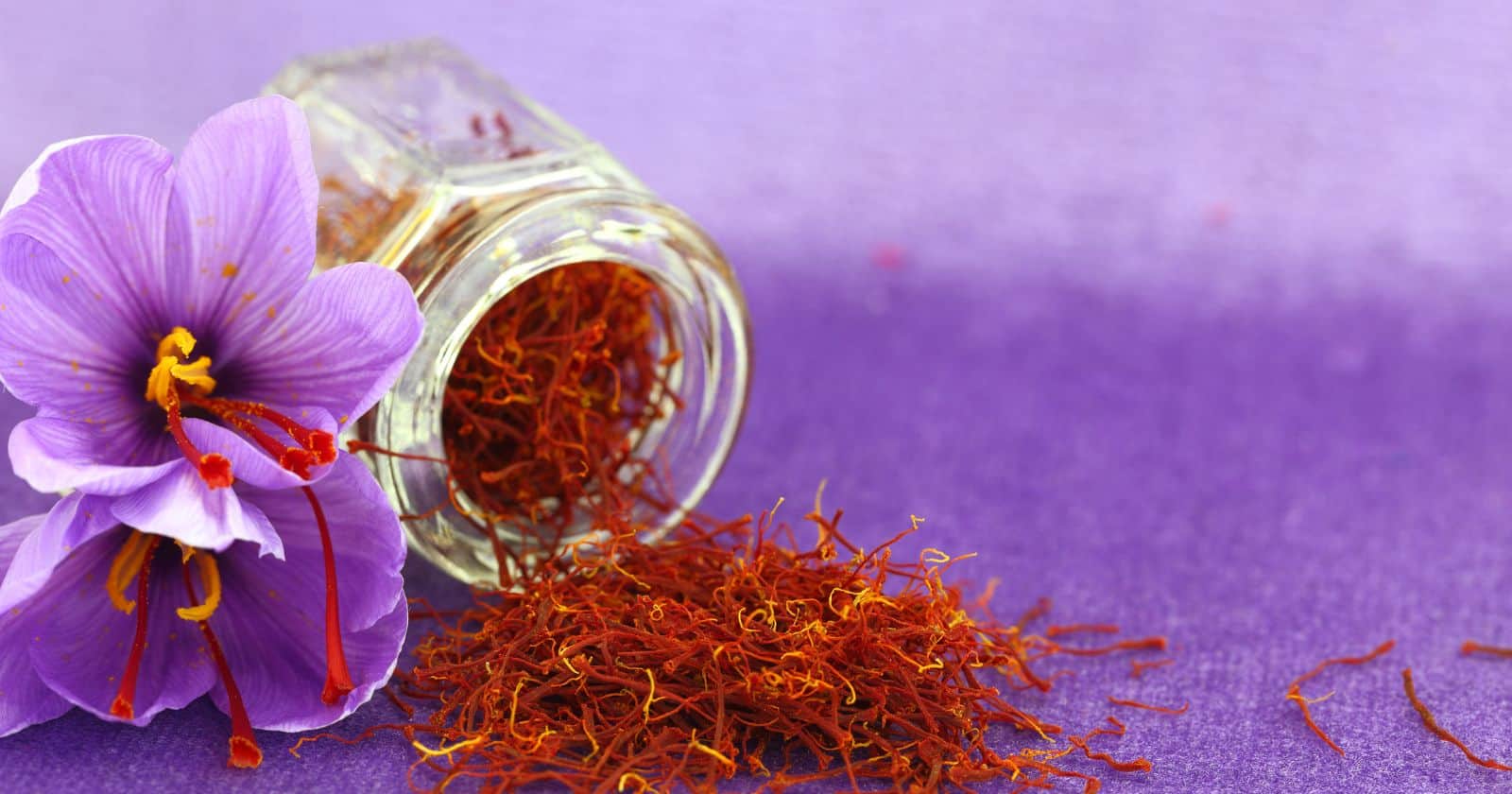Spice up your life with saffron! This incredibly unique and precious
Not only does saffron add an unmistakable flavor and aroma to any dish, but it also has many health benefits. To
In this article, we’ll dive deep into saffron’s many benefits and uses, exploring everything from its history and cultivation to its culinary applications and impressive medicinal properties.
Whether you’re a seasoned chef or simply looking to add extra flavor to your diet, we have all the saffron knowledge you need to get started.
So sit back, relax, and get ready to unlock the many secrets of this shimmering, crimson
What Is Saffron, And Why Is It So Expensive?
Saffron is a type of
Well, that’s because saffron is a highly labor-intensive crop. Each saffron crocus flower has only three tiny, threadlike stigmas in the center, and it takes about 75,000 flowers to produce just one pound of saffron!
The harvesting process is done entirely by hand, which means that it is a time-consuming and costly process.
Apart from being expensive, saffron has a distinct floral aroma and a slightly sweet taste that can enhance the flavor of many dishes.
It has been widely used in cooking for centuries and is still a popular ingredient in many traditional dishes worldwide. But did you know that saffron also has some potential health benefits?
Yes, that’s right! Saffron has antioxidant properties and may have possible health benefits such as improving mood and reducing symptoms of PMS.
Culinary Applications Of Saffron
The culinary applications of saffron are plentiful! This versatile
Saffron is commonly used in Indian, Moroccan, and Iranian cuisines, as well as Mediterranean, Asian, and European dishes. It pairs well with rice, pasta, veggies, seafood, chicken, and lamb.
Saffron is often used in rice dishes, such as steamed saffron rice with tahdig (Chelo ba tahdig). It is also an essential ingredient in the famed Italian dish, risotto alla Milanese, giving the word its distinctive yellow color and floral aroma.
The
Besides its use in rice and pasta dishes, saffron is also used in several desserts. In some Middle Eastern countries, a dessert called saffron ice cream is famous, which combines
Saffron is also used in cakes and pastries to add a distinct floral aroma and a splash of color.
Health Benefits Of Saffron
Saffron has many health benefits, like fighting inflammation and improving mood. This powerful antioxidant can help with memory and learning abilities.
It’s commonly used for depression, anxiety, and menstrual cramps. It may also boost vision and brain health and improve liver health.
Additionally, saffron may reduce inflammation, promote sleep, and accelerate wound healing.
Saffron helps treat depression and anxiety by increasing serotonin levels, which leads to mood improvements. Research has shown that saffron can be as effective as prescription medications.
Saffron treats menstrual cramps and PMS by reducing pain, bloating, and other symptoms. Additionally, saffron has anti-inflammatory properties that can help with various conditions.
Crocetin, crocin, and safranal are important antioxidants found in saffron that improve memory and learning abilities. These antioxidants can help fight oxidative stress, leading to age-related decline.
Saffron may also help prevent cancers by inhibiting the growth of cancer cells. Furthermore, saffron boosts heart health by lowering cholesterol levels, and blood pressure and improving blood flow.
Saffron And Cooking Tips
Saffron is best used sparingly in cooking. It pairs well with rice and grains. Use about 2-3 threads per serving, so for a dish that serves 6, use about 15 lines. Ground saffron can be added to plates or infused into hot water for saffron tea.
Saffron has a sweet and delicate flavor with floral and honey notes. Too much can overpower a dish with a bitter taste. Famous saffron words include risotto alla Milanese and spaghettoni with jasmine, saffron, and clams.
To make saffron rice with tahdig, use a heavy-bottomed pot, add butter and sliced potatoes, top with rice and saffron tea, then simmer.
For paella or bouillabaisse, add saffron to the broth for extra flavor. In baking, saffron can be added to the dough or glazes for a unique twist.
Saffron Is A Popular Dish Around The World
Saffron is a popular
Some of the most well-known recipes include steamed rice with tahdig, chicken tagine, and Cuban arroz con pollo, all infused with saffron’s unique flavor and vibrant color.
Bouillabaisse, a traditional French fish stew, relies on saffron to create its complex aroma and taste.
In addition to these famous dishes, saffron can be found in countless other recipes from around the globe. For example, it’s used in Spain for classic flavor dishes like paella and caldo galego, a Galician soup made with beans, vegetables, and meat.
In India, saffron adds depth to biryanis, a spiced rice dish, while in Italy, it can be found in everything from saffron risotto to panettone, a traditional holiday bread.
Despite its high price tag, saffron continues to be used by cooks and chefs worldwide because of its unique flavor and aroma.
It can transform an ordinary dish into an unforgettable culinary experience when used correctly, making it a valuable addition to any serious cook’s
Saffron Substitute
Saffron Substitute? Turmeric is the most popular substitute for saffron. Other options include paprika, curry powder, and cardamom.
However, these substitutes can change the taste of the dish. Real saffron is often adulterated with turmeric due to its similarities in color.
Turmeric resembles saffron when cooked but lacks saffron’s unique flavor. The distinct and light taste of saffron makes it a popular
However, other herbs can have a similar effect on the dish. Paprika, for instance, can provide a similar earthy flavor as saffron.
Looking for a saffron substitute often depends on the dish you’re cooking. Cumin and safflower are better suited for a savory dish. Marigold
However, no substitute can replicate the essence of real saffron in any recipe. It’s always best to use it when possible.





